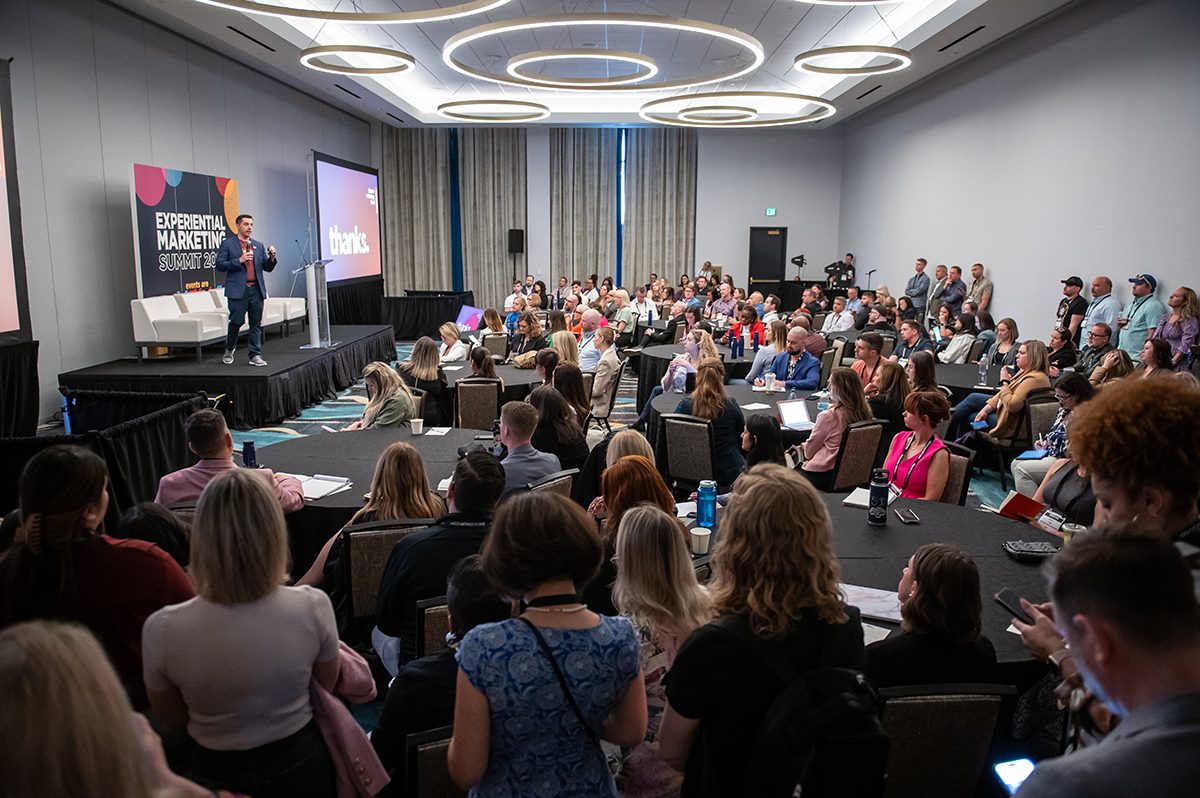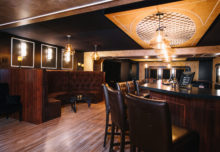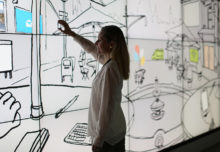If standing room only was any indication, leveling up trade show activations was a hot topic for attendees of the “Trade Show Exhibits X Experiential = The Future” master class that kicked off the 2024 Experiential Marketing Summit, held April 24-26 at the MGM Grand Las Vegas. The afternoon session featured a “Beyond Booths” session and the “Trends in Experiential Exhibits” panel, as well as peer-to-peer discussions.
Five insights that stood out to us on what’s happening at the intersection of experiential and exhibit spaces:
Complex ideas need to be tangible and digestible.
Trade show marketers are focused on return visits to booths, which create more opportunities for connection and content “consumption.” Lenovo, for example, leveraged an actual consumable beer in a recent exhibit. Attendees received “pay as you go” cards they could use at the beer station in the exhibit over the three days of the show. “It was a way to have a meaningful conversion in a fun way,” said Jon Wolff, global events manager for Lenovo’s Solutions and Services Group, who led the “Beyond Booths” session.
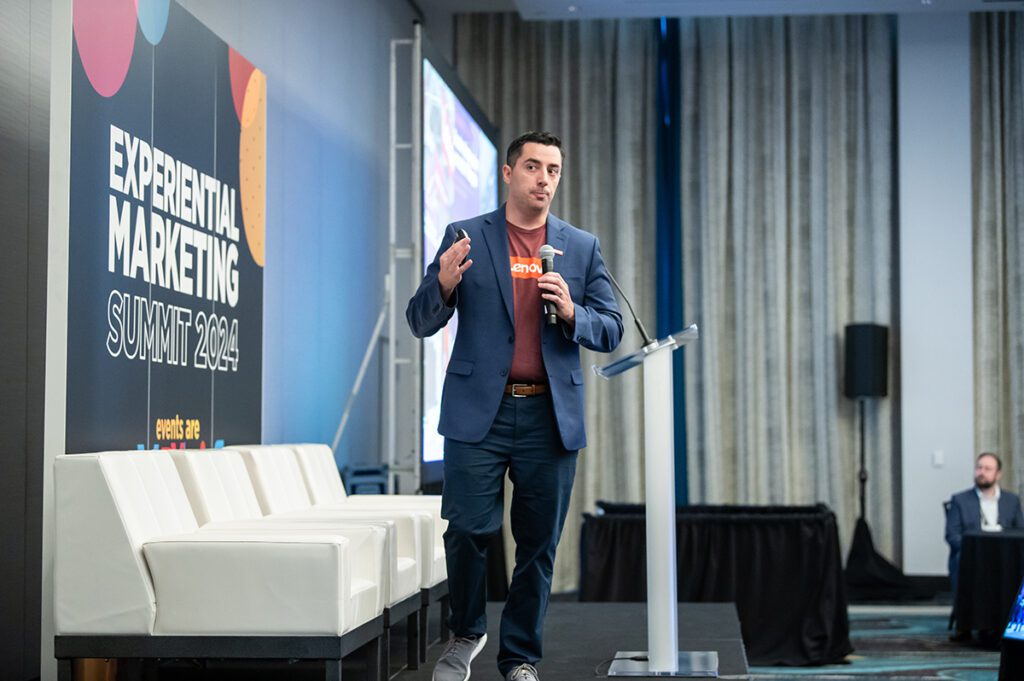
Jon Wolff, Global Events Manager, Lenovo
KPIs require a nuanced, longitudinal approach.
“It was much easier when we wrote business at every show,” explained Aaron Conk, senior merchandising and trade show manager at Delta Faucet Company, during the trends panel. “It’s taken a lot of time to get to a combination of [KPIs] that’s helpful for us, and we discovered that it’s not a one-size-fits-all solution.” For smaller shows, it can be booth foot traffic and key contacts. For larger shows, it’s a layered approach with tracking leads, demographics, engagement, purchase power and socials, among other factors. The sweet spot is about a half-dozen key metrics, he said.
Kate Alter, trade show and events manager at Philips, mentioned surveys for brand sentiment and tools such as Exposure Analytics to track in-booth engagement. “We’re looking at quality versus quantity,” she says. “So it’s less about driving badge scans and more about getting the right people in.” Her approach to deploying the tracking and measurement tools is also tailored to each show.
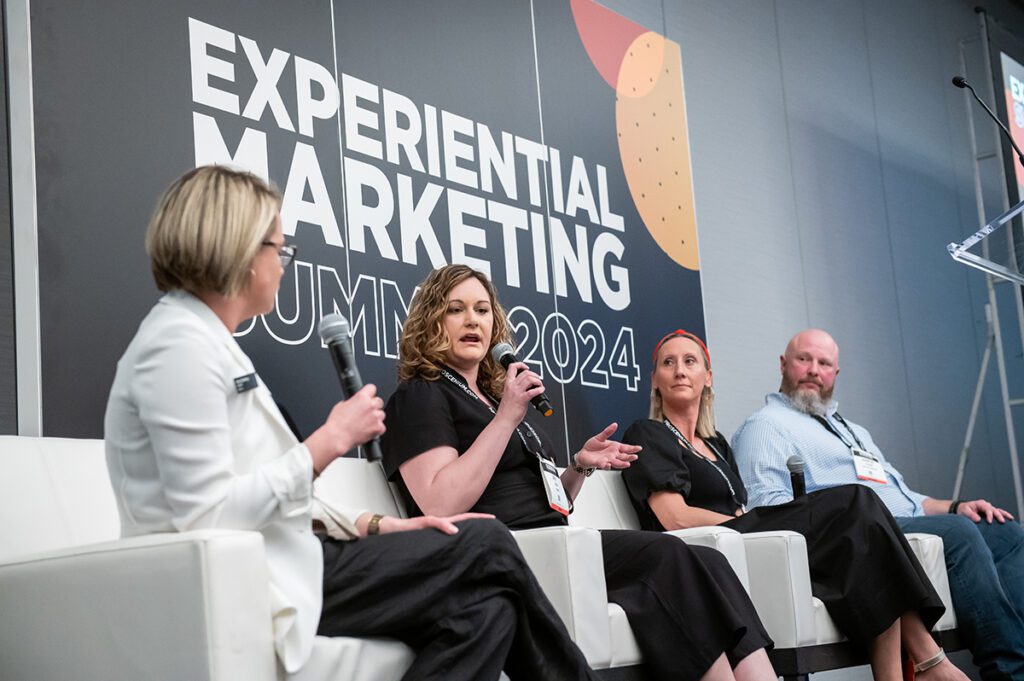
From left: Amy Sondrup, president at Access TCA and guest moderator; Kate Alter, tradeshow and events manager at Philips; Sarah Jensen, senior events manager at Toshiba; and Aaron Conk, senior merchandising and trade show manager, Delta Faucet
Data over time is what’s truly meaningful, added Amy Sondrup, president at Access TCA, and moderator of the panel. “Create a metric or a series of metrics that mean something to you and stick with it for a period of time. Too often, it’s one year we come up with something to measure, and then it’s something else. Be patient. Get the data over two or three years and see how it’s evolving.”
And with the proliferation of trackable devices, stepping up the measurement game might be more reasonably priced than expected and definitely worth a conversation with the exhibit partner about, Sondrup said.
Giveaways are not a given.
No one wants to see their logo in the trash was the consensus on giveaways as the panelists challenged the attendees to think of creative ways to give away items of value that are appropriate for the audience. Some brands are going through the “no giveaways” phase while others are looking into community-conscious ideas such as water bottle stickers that support charities or plantable pencils that drive the message of sustainability and circularity.
Sondrup suggested giving the gift of time and expertise. “How about offering an opportunity to have a consultation or a free strategy session? Ultimately, you’re looking for your audience to connect with you after the show, so think about the valuable intangible giveaways that tie into your strategy.”
Sustainability steps matter.
The trade show industry is notoriously environmentally unfriendly, and being sustainable usually requires an investment. What are some of the solutions that brands lean into? For Philips, examples include choosing solid color carpet to limit waste, and leveraging QR codes instead of bringing paper materials. “Small, simple ways can make a significant impact,” Alter said.
Sarah Jensen, senior events manager at Toshiba, noted using interchangeable graphics. For Conk and Delta Faucet exhibits, it’s recirculating water used to showcase the brand’s products, as well as careful consideration of buying or renting exhibit displays depending on their intended lifespan.
And how should trade show marketers communicate important metrics, such as reducing carbon footprint? One way, suggested by the audience, is to translate it to the number of cars on the road per year.
Real-time actionable data rules.
Several conversations were happening around tracking real-time data in exhibits and events, which allows brands and organizers to make decisions about exhibit design, engagement strategy and programming. It was hard not to be impressed by the post-Experiential Marketing Summit report by These Guys Experiential Lab, measurement partner on the show, that tracked and analyzed traffic flow and emotional responses during the keynotes and at the Highmark Hub in the show’s Hall of Ideas. An accurate sign of the industry’s direction: The sessions on creativity and redefining experiential ROI scored the highest for focus and excitement.
Have a story idea? Want us to cover your booth? Reach out to EM’s editor-at-large Anna Huddleston.
Photo Credit: PWP Studio Corporate Event Photographers


